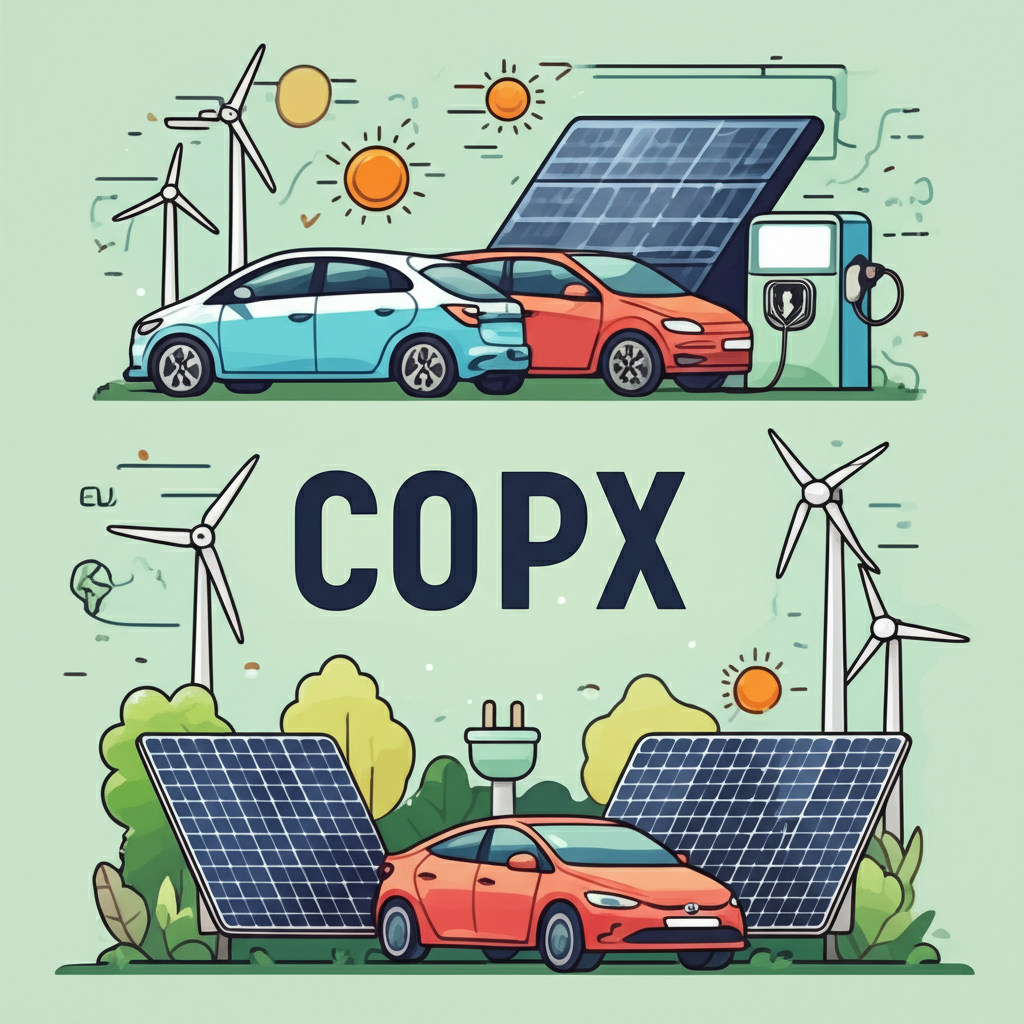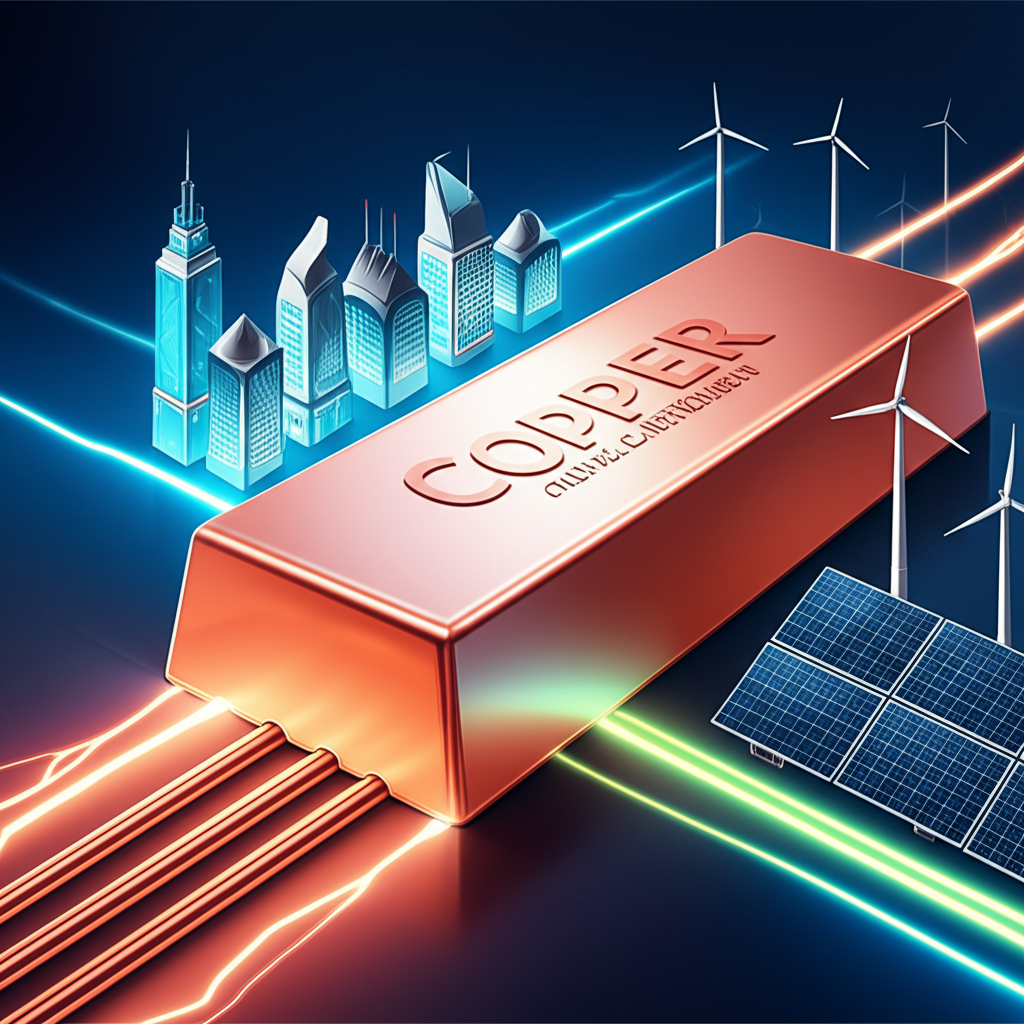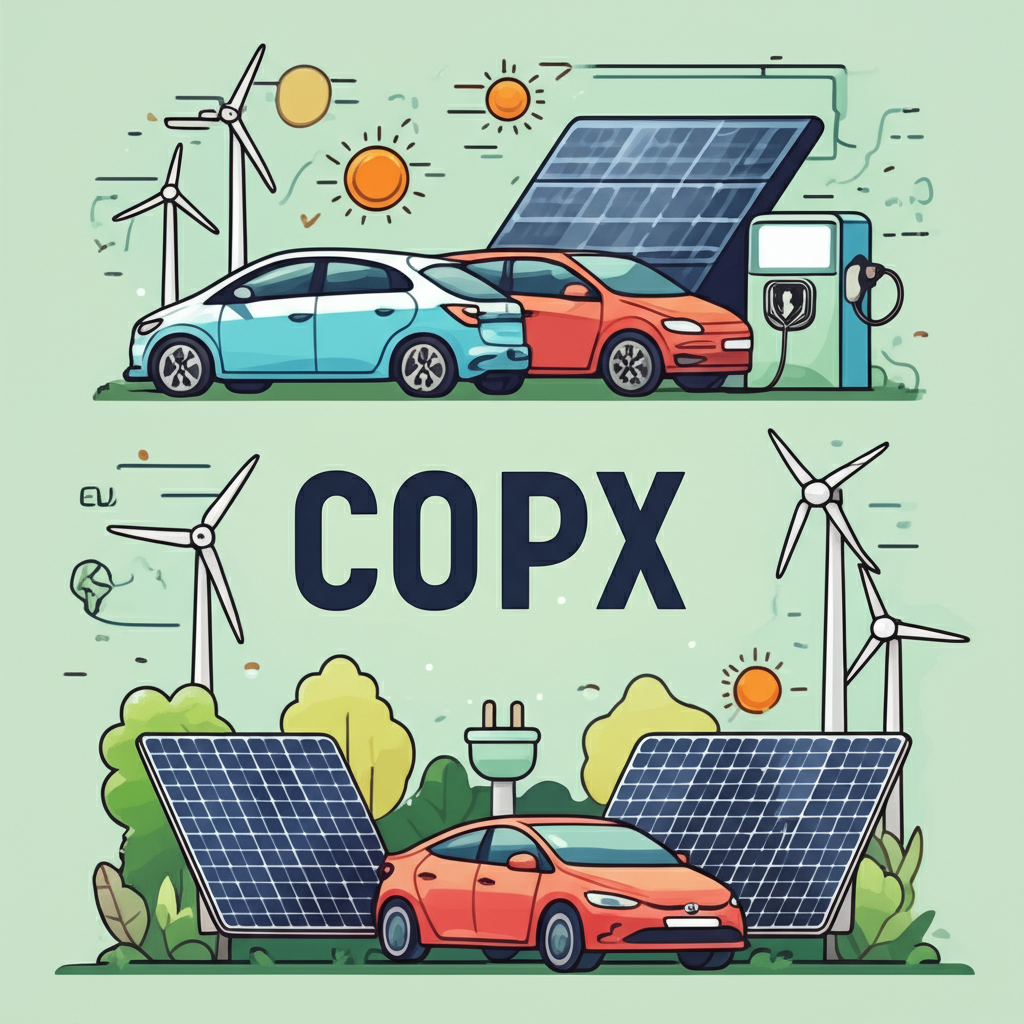The Macroeconomic Case for Copper: Fueling the Future

Copper has long been recognized as a barometer of global economic health—often called “Dr. Copper” for its uncanny ability to signal shifts in industrial activity. But beyond its diagnostic reputation, copper is now emerging as a foundational element of the 21st-century economy. As nations accelerate the shift toward electrification and low-carbon infrastructure, copper’s unmatched conductivity, durability, and recyclability make it indispensable. From power grids to digital networks, and especially in the technologies driving the clean energy revolution, copper isn’t just a commodity—it’s a strategic asset. With demand expected to surge in the coming decades, investors are increasingly turning to targeted instruments like the Global X Copper Miners ETF (COPX) to position themselves at the heart of this transformation.
Key Demand Catalysts: EVs, Renewables, and Infrastructure

The most powerful force reshaping copper demand today is the global pivot to electrification. Electric vehicles (EVs) are a prime example: each one contains between 80 and over 100 kilograms of copper—up to four times more than a conventional internal combustion engine vehicle. That demand doesn’t stop at the car itself; charging stations, distribution networks, and battery manufacturing all require extensive copper wiring and components. As EV adoption climbs worldwide, this segment alone could add millions of tons of new copper demand by 2035.
Renewable energy systems are equally copper-intensive. Solar photovoltaic installations use copper in panels, inverters, and cabling, while onshore wind farms require roughly 5 to 7 tons of copper per megawatt. Offshore installations are even more demanding, with some projects using over 10,000 tons of copper per site. According to the International Energy Agency (IEA), achieving net-zero emissions by mid-century would more than double copper demand compared to current levels, with clean energy technologies accounting for about half of total usage.
Beyond green tech, urbanization and infrastructure development in emerging markets continue to drive steady copper consumption. Expanding power grids, 5G networks, smart buildings, and water systems all rely on copper’s reliability and performance. Countries across Asia, Africa, and Latin America are investing heavily in modernization, creating a durable undercurrent of structural demand that complements the explosive growth in high-tech applications.
Supply-Side Dynamics and Challenges

While demand is accelerating, copper supply faces mounting constraints. One of the most pressing issues is the steady decline in ore grades across major mines. Over the past two decades, the average copper content in mined rock has dropped significantly, meaning companies must process more material to extract the same amount of metal. This not only increases production costs but also amplifies environmental impacts, particularly in terms of energy and water use.
Bringing new mines online is a slow and complex process. From discovery to first production, the timeline often stretches 10 to 15 years, involving extensive feasibility studies, environmental assessments, permitting, and large-scale capital investment. Many promising deposits are located in remote or politically sensitive regions, further complicating development. Regulatory hurdles, community opposition, and shifting government policies can delay or even derail projects—such as the recent challenges faced by major developments in Chile, Peru, and the Democratic Republic of Congo.
Geopolitical instability adds another layer of risk. Chile and Peru together account for nearly 40% of global copper production, making the market highly concentrated. Labor strikes, tax reforms, or nationalization threats in these countries can quickly ripple through global supply chains. Meanwhile, recycling contributes only about 30% of annual copper supply, and while that figure may grow, it won’t be enough to close the widening gap between demand and primary production.
The result? A growing consensus among analysts and institutions that the copper market is heading toward a structural deficit. The S&P Global Commodity Insights projects a shortfall of over 10 million metric tons by 2035 under a base-case scenario. This imbalance strengthens the long-term investment case for copper and, by extension, equities linked to its production.
COPX Performance Analysis: Returns, Volatility, and Trends
The Global X Copper Miners ETF (COPX) provides a streamlined way for investors to gain exposure to the copper mining sector. Rather than buying individual stocks or futures contracts, COPX offers access to a diversified basket of global mining companies. Its performance reflects a blend of commodity price movements, corporate earnings, and broader equity market dynamics, making it a dynamic but sometimes volatile instrument.
Analyzing Historical Returns Against Benchmarks
Because COPX holds equity stakes in mining firms, its returns are influenced not just by copper prices but also by the operational leverage and cost structures of its holdings. When copper prices rise, mining companies often see outsized profit growth due to fixed production costs—translating into amplified stock gains. Conversely, during downturns, the same leverage can magnify losses.
Historically, COPX has shown higher volatility than broad market indices like the S&P 500, but also periods of strong outperformance during commodity supercycles. For instance, between 2020 and 2022, as post-pandemic demand surged and green investment accelerated, COPX delivered double-digit annualized returns, outpacing both copper futures and the broader market. However, during economic slowdowns or risk-off periods, the ETF has also declined more sharply.
(Table 1: Illustrative COPX Performance vs. Benchmarks)
| Period | COPX Annualized Return | LME Copper Annualized Return | S&P 500 Annualized Return |
|---|---|---|---|
| 1-Year | [Data Placeholder]% | [Data Placeholder]% | [Data Placeholder]% |
| 3-Year | [Data Placeholder]% | [Data Placeholder]% | [Data Placeholder]% |
| 5-Year | [Data Placeholder]% | [Data Placeholder]% | [Data Placeholder]% |
| Since Inception | [Data Placeholder]% | [Data Placeholder]% | [Data Placeholder]% |
Note: Actual historical performance data would be inserted here, sourced from financial data providers.
Understanding Share Price Movements and Trading Volume
Daily fluctuations in COPX’s share price are driven by a mix of macroeconomic signals, commodity trends, and company-specific news. Reports on Chinese industrial output, U.S. infrastructure spending, or supply disruptions in South America can all trigger sharp moves. Earnings releases from top holdings like Freeport-McMoRan or Antofagasta also influence sentiment.
Liquidity is a key strength of the ETF. With consistently high average daily trading volume, COPX allows investors to enter and exit positions with minimal slippage. The bid-ask spread is typically tight, which benefits both retail and institutional traders. This level of market depth reflects strong investor interest and makes COPX one of the more accessible vehicles for gaining copper exposure.
Portfolio Deep Dive: What’s Inside the Global X Copper Miners ETF?
COPX tracks the Solactive Global Copper Miners Index, which selects companies deriving a substantial portion of their revenue from copper mining. The index applies liquidity and market cap screens to ensure investability, resulting in a portfolio of 30 to 40 firms with meaningful exposure to the sector.
Top Holdings and Company Profiles
The ETF is dominated by large-cap miners with extensive operations and strong balance sheets. Freeport-McMoRan, the world’s largest publicly traded copper producer, typically holds the top position, with major assets in the U.S., Indonesia, and South America. Southern Copper Corporation, known for its low-cost operations in Peru and Mexico, is another cornerstone holding. Antofagasta PLC, a Chilean giant with a focus on sustainability and operational efficiency, rounds out the top tier.
Other significant names include First Quantum Minerals, whose Cobre Panama mine contributes heavily to global supply; Ivanhoe Mines, developing high-grade deposits in Africa; and diversified majors like BHP Group and Glencore, which, while involved in multiple commodities, maintain substantial copper portfolios. These companies vary in geographic footprint, cost structure, and growth strategy, but all share exposure to the core drivers of copper demand.
(Table 2: Illustrative Top 10 Holdings of COPX)
| Company Name | Country of Domicile | Primary Exchange | Weight (%) |
|---|---|---|---|
| Freeport-McMoRan Inc. | USA | NYSE | [Data Placeholder]% |
| Southern Copper Corporation | USA (operations in Peru/Mexico) | NYSE | [Data Placeholder]% |
| Antofagasta PLC | UK (operations in Chile) | LSE | [Data Placeholder]% |
| First Quantum Minerals Ltd. | Canada | TSX | [Data Placeholder]% |
| Ivanhoe Mines Ltd. | Canada | TSX | [Data Placeholder]% |
| BHP Group Ltd. | Australia/UK | ASX/LSE | [Data Placeholder]% |
| Glencore PLC | Switzerland/UK | LSE | [Data Placeholder]% |
| Lundin Mining Corp. | Canada | TSX | [Data Placeholder]% |
| KGHM Polska Miedź S.A. | Poland | WSE | [Data Placeholder]% |
| Ero Copper Corp. | Canada | TSX | [Data Placeholder]% |
Note: Actual holdings and weights can be found on Global X’s official COPX page.
Geographical and Sub-Sector Exposure
One of COPX’s strengths is its global diversification. The fund provides exposure across North and South America, Europe, Australia, and Africa, reducing reliance on any single jurisdiction. Latin America remains the core region, with Chile, Peru, and Mexico hosting some of the world’s most productive mines. Canada and Australia contribute stable, jurisdictionally secure operations, while African projects offer long-term growth potential.
While the focus is on copper, several holdings are diversified miners with exposure to coal, zinc, or nickel. This introduces some cross-commodity risk but also provides internal resilience during sector-specific downturns. The index methodology ensures that only companies with significant copper-related revenue are included, maintaining thematic purity without sacrificing operational diversity.
Key Investment Metrics and Fund Details
Beyond performance and holdings, practical considerations such as cost, size, and yield play a crucial role in evaluating COPX as a long-term holding.
Expense Ratio and Its Impact on Returns
COPX carries an expense ratio of approximately 0.69% annually, which is standard for a specialized sector ETF. While higher than broad-market index funds, this fee is competitive relative to other commodity-focused or international equity ETFs. Over time, even small differences in fees can erode returns, especially in a volatile or flat market. For buy-and-hold investors, this makes cost efficiency an important factor when comparing alternatives.
(Table 3: Illustrative Key Fund Details)
| Metric | Value (Illustrative) |
|---|---|
| Expense Ratio | 0.69% |
| Assets Under Management (AUM) | $1.5 Billion |
| 30-Day SEC Yield | 1.50% |
| Inception Date | 04/16/2010 |
Note: Actual metrics should be confirmed on the official Global X website.
Liquidity and Trading Considerations
With over $1.5 billion in assets under management, COPX ranks among the largest and most liquid thematic ETFs in the materials space. High AUM supports tight bid-ask spreads and reduces the risk of price manipulation or liquidity crunches. The ETF trades on the NASDAQ, offering accessibility to global investors. For most participants, standard brokerage platforms provide seamless execution, while institutional investors can leverage the ETF’s creation/redemption mechanism to manage large positions efficiently.
Risks of Investing in the Global X Copper Miners ETF (COPX)
No investment in commodities or cyclical sectors comes without risk, and COPX is no exception. While the long-term fundamentals are compelling, investors must be prepared for periods of sharp volatility and external shocks.
Commodity Price Volatility and Market Sensitivity
The most direct risk to COPX is copper price volatility. Unlike broad equity funds, the ETF’s performance is tightly linked to a single commodity whose value swings with global industrial activity, trade policy, and monetary conditions. A slowdown in China’s construction sector, a stronger U.S. dollar, or a global recession could suppress copper demand and prices, leading to rapid declines in mining company valuations. Because mining firms have high fixed costs, even modest price drops can squeeze margins and trigger earnings downgrades.
Geopolitical and Regulatory Risks
Many of COPX’s holdings operate in countries with evolving regulatory frameworks and social tensions. In Chile, proposed constitutional reforms have included provisions for increased state control over mining. In Peru, frequent protests and political instability have disrupted operations at key sites. Tax increases, permitting delays, or forced renegotiations of concessions can erode profitability and deter investment. These risks are partially mitigated by geographic diversification, but they remain a persistent concern for long-term investors.
Company-Specific and Operational Risks
Even the most well-managed mines face operational hazards. Labor strikes, environmental incidents, equipment failures, and extreme weather events can halt production and trigger financial losses. The 2021 tailings dam incident at a major mine in Brazil, for example, led to widespread scrutiny and market sell-offs across the sector. While COPX’s diversification reduces exposure to any single event, a major crisis at a top holding can still impact the fund’s net asset value.
COPX in Your Portfolio: Integration Strategies and Scenarios
Incorporating COPX into a portfolio requires balancing its growth potential with its inherent volatility. It is best suited not as a core holding, but as a satellite position designed to capitalize on structural trends.
Diversification Benefits and Thematic Exposure
COPX offers more than just commodity exposure—it provides access to a specific, high-conviction theme: the global energy transition. Because its returns are driven by industrial and technological trends rather than consumer spending or interest rates, it often exhibits low correlation with traditional equity sectors. This can enhance portfolio diversification, particularly during periods when growth stocks underperform.
For investors focused on long-term megatrends, COPX serves as a streamlined way to back the infrastructure of a decarbonized economy. Instead of picking individual miners or speculating on futures, investors gain exposure to a basket of companies enabling the technologies of tomorrow—from EVs to smart grids.
Considerations for Different Investor Profiles
- Conservative Investors: May allocate 1–3% of their portfolio to COPX as a tactical bet on copper’s long-term trajectory. They should pair it with stable income assets and maintain a long horizon to weather volatility.
- Moderate Investors: Might allocate 3–7%, treating COPX as part of a broader commodities or natural resources allocation. They are likely to view it as a growth-oriented holding with a five- to ten-year time frame.
- Aggressive Investors: Could allocate 7–15%, using COPX to make a concentrated play on rising copper prices or supply shortages. These investors may actively monitor macro indicators and adjust position sizes based on market conditions.
Regardless of strategy, COPX should complement—not dominate—a well-diversified portfolio. Its role is to enhance exposure to a critical raw material, not to replace broad-market equity or fixed-income exposure.
Comparing COPX to Other Copper Investment Options
Investors have multiple paths to gain copper exposure, each with distinct trade-offs.
COPX vs. Direct Copper Futures ETFs
Futures-based ETFs, such as those tracking COMEX or LME copper contracts, offer pure price exposure without equity risk. However, they face a structural challenge: contango. When future prices are higher than spot prices, rolling contracts forward results in a negative roll yield, which erodes returns over time. COPX avoids this issue by investing in equities, which can grow earnings, pay dividends, and benefit from operational improvements. While subject to stock-specific risks, mining equities may offer better long-term compounding potential.
COPX vs. Other Copper Mining ETFs
Other ETFs, such as the VanEck Copper Miners ETF (CUPM) or the iShares Global Copper ETF (COPX), may track different indices or apply varying screens for ESG or market cap. Some focus exclusively on pure-play miners, while others include smelters or recyclers. Investors should compare tracking error, expense ratios, and top holdings to find the best fit. COPX stands out for its established track record, deep liquidity, and balanced exposure to both large and mid-cap miners.
Individual Copper Mining Stocks: Pros and Cons
Buying individual stocks allows investors to target companies with superior management, low production costs, or high-growth projects. A successful discovery or expansion can generate outsized returns. However, this approach demands extensive research and carries significant idiosyncratic risk. A single operational setback or regulatory issue can devastate a stock’s value. COPX spreads this risk across dozens of companies, offering a more stable, albeit less explosive, return profile.
ESG Considerations in Copper Mining Investments
As sustainable investing gains traction, the environmental and social footprint of copper mining has come under scrutiny. While copper enables green technologies, its extraction is energy- and resource-intensive, raising legitimate concerns.
Environmental Impact and Sustainable Practices
Open-pit mining, the most common method for copper extraction, consumes vast amounts of water and energy—often in arid regions like the Atacama Desert. Tailings storage facilities pose long-term environmental risks if not managed properly. However, the industry is evolving. Leading miners are investing in solar and wind power to run operations, deploying advanced water recycling systems, and adopting automated, energy-efficient technologies. The concept of “green copper”—produced with minimal carbon emissions—is gaining momentum, driven by demand from automakers and tech firms committed to carbon-neutral supply chains.
The World Bank emphasizes that responsible mining is essential to scaling up clean energy infrastructure. Without sustainable practices, the environmental cost of the energy transition could outweigh its benefits.
Social Responsibility and Governance
Social risks include land disputes, impacts on indigenous communities, and labor conditions. Mining projects must navigate complex stakeholder landscapes, requiring transparent engagement and equitable benefit-sharing. Governance issues—such as corruption, lack of board independence, or weak oversight—can undermine investor confidence.
COPX does not apply ESG screens, so it includes companies with varying sustainability records. However, many of its top holdings are subject to stringent disclosure requirements and investor pressure to improve ESG performance. Investors concerned about sustainability can review individual company reports or consider pairing COPX with ESG-focused funds to balance exposure.
Conclusion: Is Global X Copper Miners (COPX) a Buy?
The Global X Copper Miners ETF (COPX) represents a strategic gateway to one of the most critical materials of the coming decades. With demand poised to rise from electric vehicles, renewable energy, and global infrastructure, and supply growth constrained by geological, environmental, and geopolitical factors, copper is set to play a central role in the low-carbon economy. COPX offers a liquid, diversified, and accessible way to participate in this trend through equity ownership in leading mining firms.
However, this opportunity comes with notable risks. Price volatility, operational hazards, and geopolitical exposure mean that COPX is best suited for investors with a medium to high risk tolerance and a long-term perspective. It should be used as a thematic satellite holding rather than a core portfolio component.
For those aligned with the vision of a more electrified, sustainable world, COPX provides more than financial exposure—it offers a stake in the physical infrastructure of that future. When combined with careful due diligence, portfolio discipline, and an awareness of ESG implications, it can be a powerful tool for building resilience and growth in a changing global economy.
What exactly is the Global X Copper Miners ETF (COPX) and what does it invest in?
The Global X Copper Miners ETF (COPX) is an exchange-traded fund that invests in companies involved in the copper mining industry. It aims to provide investors with direct exposure to the performance of global copper mining companies by tracking the Solactive Global Copper Miners Index. Its holdings typically include a diversified portfolio of publicly traded companies that derive a significant portion of their revenue from copper exploration, extraction, and production.
How has COPX performed historically, and what factors influence its share price?
COPX’s historical performance is closely tied to global copper prices, which are influenced by supply and demand dynamics, economic growth, and geopolitical events. Its share price is also affected by the operational and financial performance of its underlying constituent companies, including factors like production costs, mine output, and company-specific news. As an equity-based ETF, it can be more volatile than broader market indices but offers direct exposure to the copper sector’s growth potential.
What are the main risks associated with investing in the Global X Copper Miners ETF?
Key risks include:
- Commodity Price Volatility: Direct sensitivity to fluctuating copper prices.
- Geopolitical Risks: Exposure to political instability, regulatory changes, or social unrest in mining regions.
- Operational Risks: Company-specific issues like labor disputes, accidents, or production disruptions.
- Currency Risk: Fluctuations in foreign exchange rates can impact the value of international holdings.
- Concentration Risk: While diversified, it is concentrated in a single sector (copper mining).
How does COPX provide exposure to the copper market compared to buying physical copper or individual mining stocks?
COPX invests in the equity of copper mining companies, offering an indirect exposure to copper prices along with the potential for operational leverage and company growth. This differs from:
- Physical Copper: Involves storage and insurance costs, and is not easily accessible for retail investors.
- Direct Copper Futures ETFs: Tracks futures contracts, which are subject to contango/backwardation effects but offer pure commodity price exposure.
- Individual Mining Stocks: Offers higher risk and reward potential but lacks the diversification of an ETF, exposing investors to single-company specific risks.
What is the expense ratio for COPX, and how does it compare to other commodity or sector-specific ETFs?
The expense ratio for COPX is typically in the range of 0.60% to 0.75% annually (investors should check the latest official figures). This figure is generally competitive for a specialized sector ETF. Broader market ETFs usually have lower expense ratios, while some actively managed or highly niche commodity ETFs might have higher fees. It’s crucial to compare it with other copper-focused or materials sector ETFs to assess its cost-effectiveness.
Is COPX a good investment for long-term growth given the global shift towards green energy?
Many analysts believe COPX holds significant long-term growth potential due to copper’s critical role in the global energy transition. The increasing demand from electric vehicles, renewable energy infrastructure, and grid modernization projects suggests sustained demand for copper. For investors bullish on these megatrends and willing to accept the associated risks and volatility, COPX can be a compelling long-term strategic investment, offering diversified exposure to the companies at the forefront of copper supply.
What are the top holdings within the COPX ETF, and what geographical regions do they operate in?
COPX’s top holdings typically include major global copper mining companies such as Freeport-McMoRan, Southern Copper Corporation, Antofagasta PLC, and First Quantum Minerals. These companies operate across diverse geographical regions, including North and South America, Australia, Europe, and Africa, providing geographical diversification within the ETF’s portfolio.
How can COPX be integrated into a diversified investment portfolio?
COPX can be integrated into a diversified portfolio in several ways:
- Thematic Exposure: As a targeted play on the electrification and green energy trends.
- Sector Diversification: To add exposure to the materials sector, which may have a low correlation with other equity sectors at times.
- Commodity Play: As a proxy for commodity exposure, albeit with equity risk.
It’s generally recommended to allocate a smaller, tactical portion of a portfolio (e.g., 1-15% depending on risk tolerance) to COPX, balancing it with more stable asset classes like bonds and broader equity funds.
What is the outlook for copper prices, and how might this impact COPX?
The outlook for copper prices is generally positive in the medium to long term, driven by the energy transition and expected supply deficits. Forecasts from institutions like the International Monetary Fund (IMF) indicate a sustained increase in demand. A bullish outlook on copper prices would likely translate into increased profitability for copper mining companies, positively impacting COPX’s share price. Conversely, any slowdown in global growth or unexpected surge in supply could exert downward pressure on prices and, consequently, on COPX.
Are there any ESG (Environmental, Social, Governance) considerations when investing in copper mining ETFs like COPX?
Yes, ESG considerations are increasingly important for copper mining. The industry faces challenges related to:
- Environmental Impact: Energy consumption, greenhouse gas emissions, water usage, and waste management.
- Social Responsibility: Labor practices, worker safety, and community relations, especially with indigenous populations.
- Governance: Corporate ethics, transparency, and anti-corruption measures.
While COPX itself doesn’t explicitly screen for ESG, many of its underlying holdings are large, publicly traded companies that are under increasing pressure to improve their ESG performance and disclosures. Investors may wish to research the ESG profiles of COPX’s top holdings.

留言